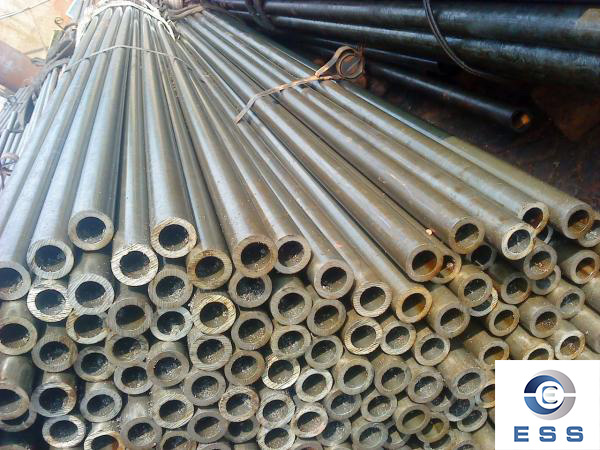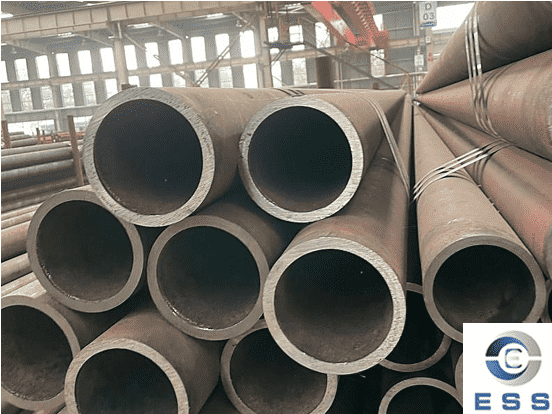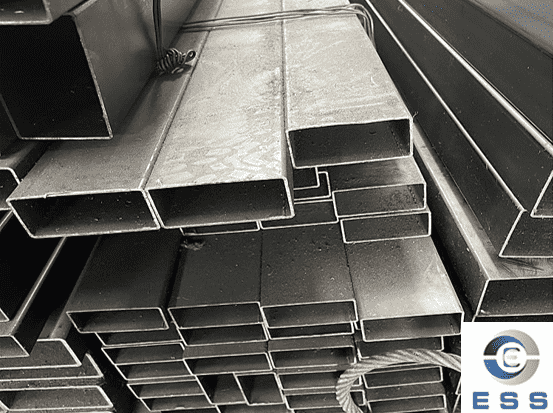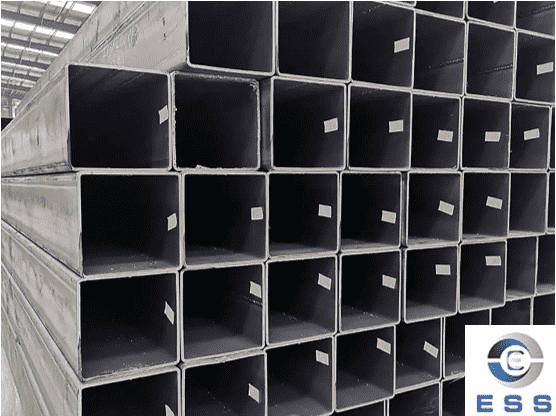Characteristics of hot-rolled
seamless steel pipes

Characteristics and production process of hot-rolled seamless steel pipes
Hot-rolled seamless steel pipes refer to steel billets that are made by multiple cold and hot rolling, cold drawing and other processing processes under high temperature. Compared with ordinary seamless steel pipes, hot-rolled seamless steel pipes have the following characteristics:
1. Smooth inner and outer walls and high precision;
2. Strong pressure bearing capacity and good tensile strength;
3. Stable chemical composition, no defects such as oxides, impurities and inclusions.
Advantages: It can destroy the casting structure of the ingot, refine the grains of the steel, and eliminate the defects of the microstructure, so that the steel structure is dense and the mechanical properties are improved. This improvement is mainly reflected in the rolling direction, so that the steel is no longer an isotropic body to a certain extent; the bubbles, cracks and looseness formed during casting can also be welded under high temperature and pressure.
Disadvantages:
1. After hot rolling, the non-metallic inclusions (mainly sulfides and oxides, as well as silicates) inside the steel are pressed into thin sheets, and stratification (interlayer) occurs. Delamination greatly deteriorates the tensile properties of steel along the thickness direction, and interlayer tearing may occur when the weld shrinks. The local strain induced by weld shrinkage often reaches several times the yield point strain, which is much larger than the strain caused by load.
2. Residual stress caused by uneven cooling. Residual stress is the internal self-balanced stress without external force. Hot-rolled steel sections of various cross-sections have this type of residual stress. Generally, the larger the cross-sectional size of the steel section, the greater the residual stress. Although the residual stress is self-balanced, it still has a certain impact on the performance of steel components under external forces. For example, it may have an adverse effect on deformation, stability, fatigue resistance, etc.
3. Hot-rolled steel products are difficult to control in terms of thickness and side width. Everyone is familiar with thermal expansion and contraction. Since the length and thickness of the hot-rolled steel meet the standards at the beginning, there will still be a certain negative difference after cooling. The wider the side width and the thicker the thickness, the more obvious this negative difference is. Therefore, for large-sized steel, the side width, thickness, length, angle, and side line of the steel cannot be too precise.
The production process of hot-rolled seamless steel pipes is generally divided into two categories: hot rolling and cold drawing. The hot rolling method is suitable for the production of large-diameter thin-walled seamless steel pipes, which are generally used in industrial production; while the cold drawing method is suitable for the production of small-diameter, thick-walled seamless steel pipes, which are generally used for high-precision manufacturing.
Implementation standards for hot-rolled seamless steel pipes
There are many implementation standards for hot-rolled seamless steel pipes at home and abroad. Here are several commonly used standards:
1. GB/T8162-2008 "Seamless Steel Pipes-Structural Steel Pipes" standard: Applicable to seamless steel pipes for general structures and mechanical structures.
2. GB/T3087-2008 "Seamless Steel Pipes-Steel Pipes for Low and Medium Pressure Boilers" standard: Applicable to seamless steel pipes for low and medium pressure
boiler tube.
3. ASTM A106-2018 "
Seamless carbon steel pipes for High Temperature Service" standard: Applicable to conveying media at elevated temperatures.
4. EN 10210-1: Seamless steel pipes for structures for various purposes, including machinery manufacturing, construction and bridge engineering.
5. JIS G3441-1994 "Alloy Steel Tubes for Machine Purposes" standard: Applicable to fields such as machine and automobile manufacturing.
Each standard has its scope of application and technical parameters, and need to pay attention when selecting standards according to specific needs.
Application fields of hot-rolled seamless steel pipes
Hot-rolled seamless steel pipes are widely used in high-pressure liquid pipelines such as petroleum, chemical, and natural gas, and in manufacturing fields such as machinery and automobiles. Among them, pipelines are mainly used to transport oil and natural gas, and are also used to transport other high-pressure and high-temperature liquids; machinery, automobiles and other manufacturing fields are mainly used to manufacture various machinery, parts, auto parts, etc.
In general, hot-rolled seamless steel pipes have the characteristics of high strength, high precision, corrosion resistance, and high pressure resistance, and are widely used in various fields. When selecting steel pipes, select appropriate execution standards and specifications according to specific application needs and requirements to ensure the use effect and safety.
Read more: EN 10210 Seamless Steel Pipe













 Eastern Steel Manufacturing Co.,Ltd not only improve product production and sales services, but also provide additional value-added services. As long as you need, we can complete your specific needs together.
Eastern Steel Manufacturing Co.,Ltd not only improve product production and sales services, but also provide additional value-added services. As long as you need, we can complete your specific needs together.










